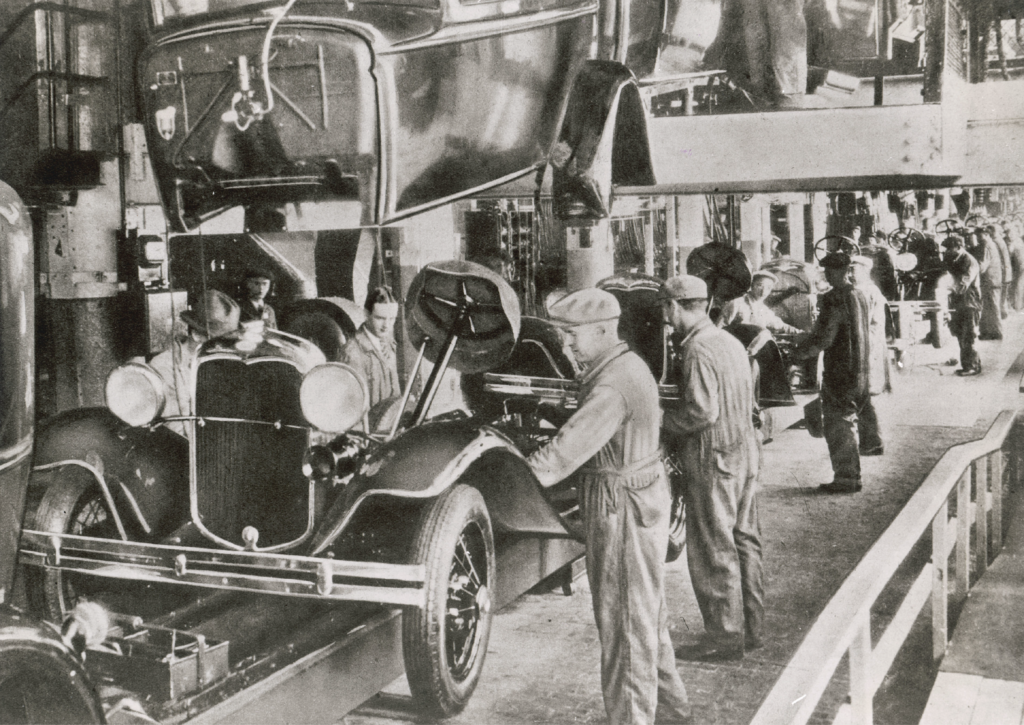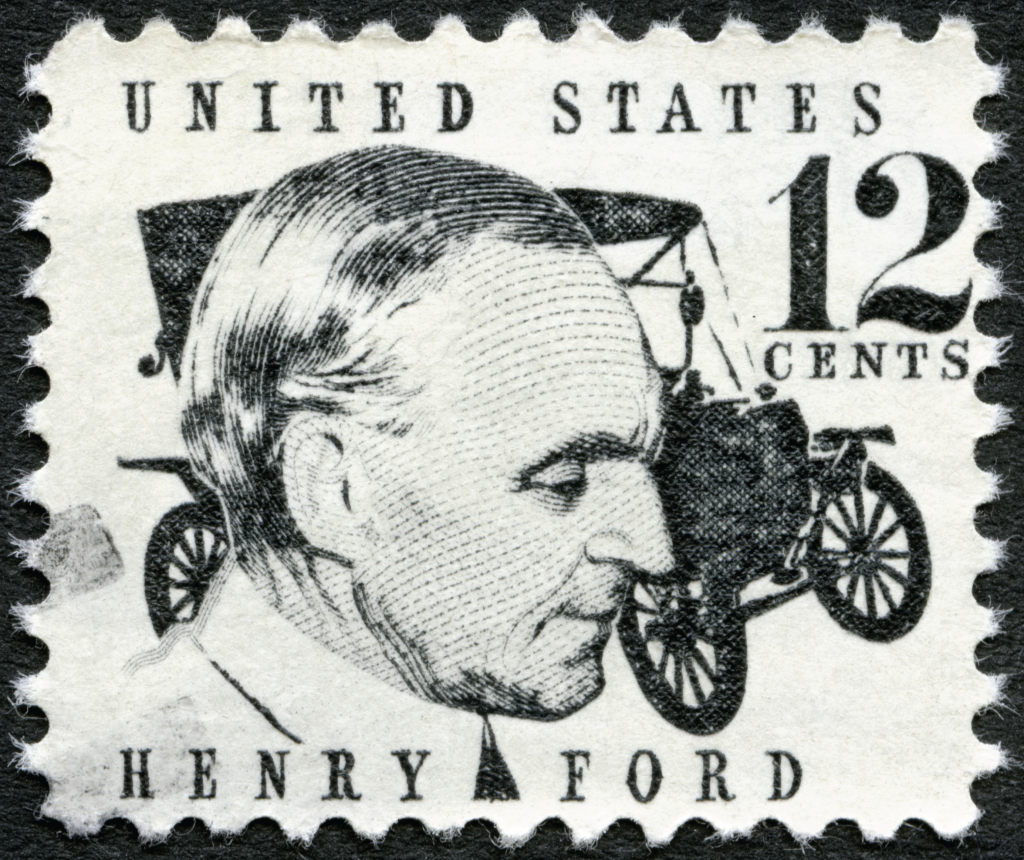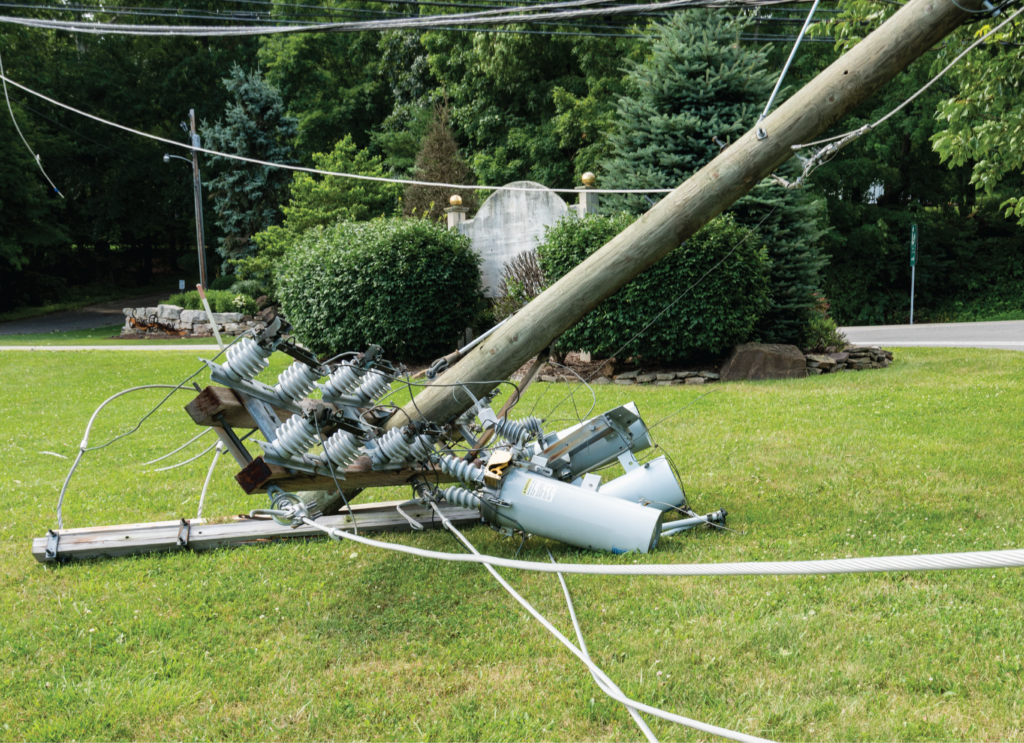
Kranzberg’s First and Second Laws
Technology’s Stories vol. 6, no. 4 – DOI: 10.15763/jou.ts.2018.12.20.01
PDF: Schatzberg_Vinsel_Kranzberg First and Second Laws
Kranzberg’s First Law
By Eric Schatzberg
“Technology is neither good nor bad, nor is it neutral.”
This gnomic pronouncement is probably the best known of Kranzberg’s six laws. A search on this phrase produces over 9000 hits on Google, and almost 400 hits on Google Scholar. And who knows how many times it has been paraphrased.
But Kranzberg’s first law surely requires elaboration. Kranzberg’s own discussion, in his 1986 article, hardly makes his first law crystal clear. Here’s how he explains it:
technology’s interaction with the social ecology is such that technical developments frequently have environmental, social, and human consequences that go far beyond the immediate purposes of the technical devices and practices themselves, and technology can have quite different results when introduced into different contexts or under different circumstances.[1]
I’m not sure what this means beyond the simple idea that purposeful action has unintended consequences. The idea of unintended consequences has been a fixture in social theory since Robert Merton’s well known 1936 article. Kranzberg’s 1986 article provides a number of examples, which include DDT, the factory, and air pollution. These examples also do little to clarify his first law. They primarily serve as a defense of technological progress against its critics, rather than a nuanced discussion of what his first law means.

Figure 1. Man spraying DDT. Licensed from Adobe Stock.
But I think there is a much more profound interpretation of Kranzberg’s first law. This law is not just an assertation about unintended consequences, that the effects of adopting a technology are hard to predict. Instead, in my view, Kranzberg’s first law is a fundamental claim that technologies have inherent moral values.
Now, most commentators on Kranzberg’s law talk about technology as artifact. Artifacts can be used in a variety of ways, for a variety of purposes, some good, some bad. Artifacts transferred to new contexts can behave in unexpected ways. One commonly cited example is the hammer, which can drive nails or crack skulls, two morally opposed but intended uses. And hammers can also smash fingers, an unintended consequence.
However, this analysis is reductive and problematic. Kranzberg didn’t write, “artifacts are neither good nor bad.” Such an interpretation would violate Kranzberg’s sixth law, which states in part that “technology is a very human activity.”
We cannot understand the moral value of technologies if we reduce them to artifacts.
Instead, we need to focus on technology not as things but as a form of human action. As I’ve argued elsewhere, the tendency to separate technology from the human is embedded in the history of the concept of technology itself.
This concept, technology, emerged in the early 20th century as a replacement for the medieval concept of mechanical arts. In this context, art clearly refers to human action, unlike the later concept of technology. Imagine rephrasing Kranzberg’s law this way: “The mechanical arts are neither good nor bad, nor are they neutral.”
When framed in this way, Kranzberg’s first law is both obvious and profound. The concept of art has a continuous, 2500-year history in the Western tradition. Only in the 19th century did the definition of art as fine art gradually replace the broader concept of art.
In this older tradition of art, the moral status of the arts was a point of contention. Were the arts inherently virtuous, or did their virtue lie in serving ends given to the artisan by others? This question is really about the place of technicians within the social order, as Serafina Cuomo has argued.

Figure 2. Ford assembly line. Licensed from Adobe Stock.
Debate over the moral status of the arts goes back to the ancient Greeks with their concept of techne. This term is usually translated as art in the sense of mechanical arts. Aristotle argued that human actions are directed toward ends that involve some conception of the good. All human action is therefore, in a sense, moral action.
Yet Aristotle also argued that the arts (techne) has no inherent moral virtue. The human activity associate with techne is creation, poiesis. According to Aristotle, the good involved in the action of poiesis lies with what is produced, not the activity itself. For poiesis, says Artistotle, “the works are naturally better than the actions.”[2]
For example, the moral value of the art of pottery resides in the pot, not the potter.
And who defines the moral value of works of art, according to Aristotle? Not the artisans themselves, but rather their patrons. In other words, technical action is itself morally neutral. The moral value of techne lies only its ends. There is thus nothing inherently virtuous about the practice of an art, that is, about technology as a form of human action.
Aristotle’s views on this subject pretty clearly reflect the social hierarchies of his era. In his world, aristocratic elites judged the moral worth of artisan-practitioners. Not surprisingly, technical practitioners, from Greek physicians to Weimer engineers, have almost universally rejected this interpretation of their work.
Kranzberg was, I believe, siding with the technical practitioners in this debate. Technology, he says, is morally ambiguous. But it is not morally neutral. As a form of human action, technology is infused with human values, both good and evil.
Eric Schatzberg is Chair of the Department of the School of History and Sociology at Georgia Tech’s Ivan Allen College of Liberal Arts.
[1] Melvin Kranzberg, “Technology and History: ‘Kranzberg’s Laws,’” Technology and Culture 27:3 (July 1986): 545.
[2] Aristotle, Nicomachean Ethics, Book I.
Kranzberg’s Second Law
By Lee Vinsel
“Invention is the mother of necessity.”
I hadn’t read Kranzberg’s laws at least since grad school, and I don’t think I’d ever read them deeply until preparing for this gathering. In several ways, it’s an odd document, though one that contains several points of interest. Kranzerg says that the laws “are not laws in the sense of commandments but rather a series of truisms deriving from a longtime immersion in study.”[1]
But the truisms are a kind of mixed bag: some are about technology and technological change, while others are about historiography and the relationship between historians and the wider world, including policy-making. Some of the individual laws hold up better than others.
I’ve been given the Second Law: Invention is the Mother of Necessity. I believe that the insight in this “law” is correct and has been supported by lots of work done after Kranzberg’s address, and that this insight is one of the most important gifts historians have to give to contemporary discussions about technology. Now, clearly, Kranzberg is inverting the proverb “Necessity is the Mother of Invention,” which goes back at least to the 16th century, perhaps back to Plato. His point is that, if we want technological systems to work, we must do a great deal of refinement and further development. As Kranzberg writes, “Every technical innovation seems to require additional technical advances in order to make it effective.”

Figure 1. Henry Ford on a postage stamp, 1968. Licensed from Adobe Stock.
In his description of the phenomenon, Kranzberg writes as if technology does things, perhaps a result of his word play that inventions mother necessity. In the address, inventions are not only mothering, but also requiring, spawning, upsetting, generating, bringing, and especially necessitating. Now, some of you gathered here today may be into actants, speculative realism, object-oriented ontology, and ideas in which things have agency, so this talk about technology doing things will be right up your alley. But I’ve never been able to go in for that stuff mostly because in Blacksburg, Virginia, where I live, we just sadly don’t have access to strong enough psychoactive drugs.
But if we remove these technology-doing-things phrases, what we’re left with is basically right, and what we’re left with has been supported by subsequent research. Kranzberg refers to Tom Hughes often throughout the address, and I think the mentions show that Kranzberg thought that Hughes was the true master of the moment. The Hughesian way of dealing with the necessity of subsequent development in technological systems was the “reverse salient,” the thing that draws attention because it is holding the system back. Many SHOT members have developed this idea. The studies that came to mind while I was writing this were Gail Cooper on air-conditioning, Amy Slaton on concrete, Steve Usselman on railroads, Andy Russell and Richard John on telecom, and most recently Julie Cohn on electricity grids. We can imagine a monograph or edited volume that goes even further: the series of case studies begin after the initial invention is invented and all of the juicy interest, charisma, and sexiness has exited stage left, and we are left only with a bunch of engineers, technicians, bureaucrats, and no doubt people with MBAs and law degrees muddling through. Sounds like a good book to me.

Figure 2. Power post and line in need of maintenance. Licensed from Adobe Stock.
And that book would be an important antidote to so many assumptions made about technology today. In this way, Kranzberg’s second law is one of our greatest gifts. I’ve been talking to Paul Nightingale, the deputy director of SPRU in England, about related matters having to do with insane things that people say about innovation today. Nightingale takes aim at what he sees as the Schumpeterian assumption that inventions/innovations emerge fully formed, undermining existing technologies and markets—a view that is even more grossly represented by the likes of Clayton Christensen’s “disruptive innovation” and the hopefully now-dead chatter about “killer apps.” Nightgale contrasts Schumpeter with Nathan Rosenberg, who always emphasized incremental change and long, slow, anonymous processes of development. Nightingale argues that most important innovation in England—but also probably elsewhere—is happening in large corporations with extensive supply chains, rather than in university science parks, innovation and creativity districts, or god forbid Design Thinking Bootcamps. In this way, the insight in Kranzberg’s second law is important.
I want to end by raising two questions about potentially problematic assumptions built into Kranzberg’s laws. As I was working on this, I realized that both of these are issues David Edgerton has raised before, so as is so often true these days I’m probably just channeling Edgerton’s spirit. (And of course in Shock of the Old and other works, Edgerton has explored things very much covered by Kranzberg’s second law.) The first assumption is that the goal of the history of technology should be to produce generalizations about technology and life with it, generalizations that appear to cut across time and space, something we also see in SCOT and whatnot. Instead, I think Edgerton argues that historians of technology should be engaging history, which would require historians of technology to engage “mainstream” professional historical bodies. We can think about how Richard John is more centrally rooted in the historiography of the OAH than in questions arising from SHOT, for instance. The second, related assumption is that the history of technology is and should be relevant. Now, part of what Andy Russell and I hope to do in our work with Maintainers is precisely to show how the literature arising out of SHOT is relevant, but today I believe that there is often a kind of rush to relevance. The way Edgerton has put this somewhere is that when he attended SHOT’s 50th anniversary celebration in Washington DC he noted that there was more talk about the morality and politics of technology than there was about history. We’d be better served by making sure we are starting from deep and fundamental historical and historiographical questions, no matter how these questions are motivated. So, my hope is that as we discuss Kranzberg’s laws we can also discuss the assumptions that are built into them—some of which are now gone, but some of which remain with us to this very day.
Lee Vinsel is Assistant Professor in the Department of Science, Technology, and Society at Virginia Tech.
[1] Melvin Kranzberg, “Technology and History: ‘Kranzberg’s Laws,’” Technology and Culture 27:3 (July 1986): 545.
******
Editor’s Note: These essays are drawn from the roundtable plenary “Kranzberg’s Laws at Sixty”, held at the Society for the History of Technology (SHOT) Annual Meeting, October 11, 2018 in St. Louis. 2018 is the sixtieth anniversary of the founding of SHOT, and Melvin Kranzberg, a seminal figure in the emergence of both SHOT and the history of technology as a discipline. The article in which Kranzberg’s Laws first appeared is: Melvin Kranzberg, “Technology and History: “Kranzberg’s Laws”, Technology and Culture 27, no. 3 (1986): 544-560.You can find it at http://www.jstor.org.
To learn more about Melvin Kranzberg see Robert C. Post. “Chance and Contingency: Putting Mel Kranzberg in Context.” Technology and Culture 50, no. 4 (2009): 839-872. Your can find this at Project Muse https://muse.jhu.edu/.
